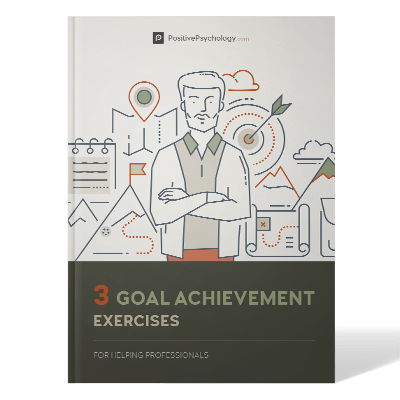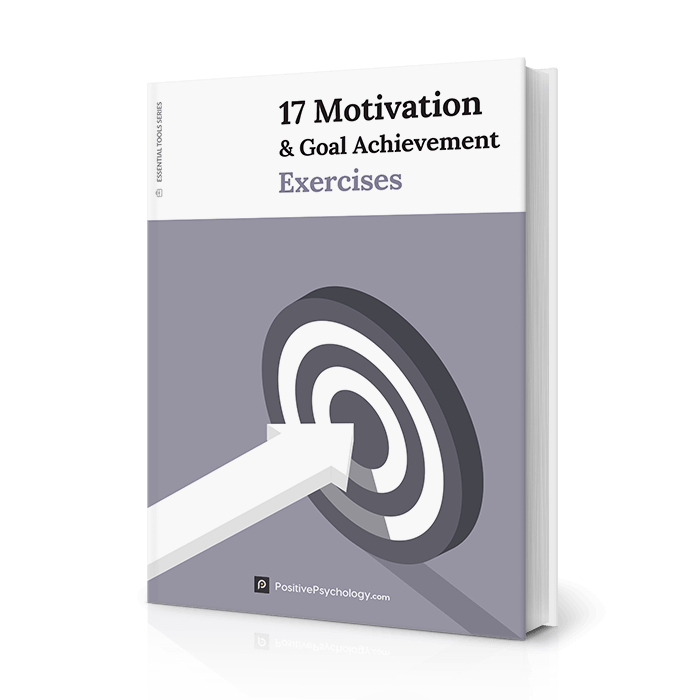Self-Coaching Model: 56 Questions & Tools (+ CTFAR Model)
 The next time you feel stuck with a problem, I invite you to close your eyes and imagine a wise person.
The next time you feel stuck with a problem, I invite you to close your eyes and imagine a wise person.
In your thoughts, approach them and describe your problem to them.
Imagine their response and the entire detailed conversation. How do they perceive the problem? What is their response and recommendation? How do you feel afterward?
The presumption and coaching philosophy that we can solve our own problems better than we think has been supported with evidence from research studies for many years (Biswas-Diener & Dean, 2007).
This includes the effectiveness of micro-interventions such as an imagined conversation with a wise person (Glück & Baltes, 2006).
Learning and guiding yourself through cognitive solution-focused processes like these is an example of a practice called self-coaching – a skill worth cultivating.
Before you continue, we thought you might like to download our three Goal Achievement Exercises for free. These detailed, science-based exercises will help you or your clients create actionable goals and master techniques to create lasting behavior change.
This Article Contains:
What Is Self-Coaching?
“Self-coaching is the process of guiding our growth and development, particularly through periods of transition, in both the professional and personal realms” (Batista, 2013).
Perhaps best understood as the practice of guiding your own thinking in a structured way and changing your perspective toward a solution, self-coaching comprises several core components.
These core components are self-reflection and inner dialogue; constructive thinking; and the use of models, powerful coaching questions, exercises, and strategies.
While a self-coaching individual simultaneously assumes the role of both the coachee and the coach, it is important to recognize that self-coaching is not intended to replace a professional coaching intervention.
In fact, coaching from a professional coach is likely to be more effective than self-coaching (Losch, Traut-Mattausch, Mühlberger, & Jonas, 2016; Sue-Chan & Latham, 2004)
However, self-coaching can also lead to a reduction in procrastination (Losch et al., 2016). We may regard it as an additional resource that clients can draw on to navigate challenges, cultivate creative and constructive thinking, and develop a growth mindset.
Because of the absence of support, feedback, and perspective of the coach in a self-coaching context, some suggest that the effectiveness of self-coaching may be moderated by the degree of self-leadership skills inherent to the self-coachee (Losch et al., 2016).
Competent self-leaders may be more successful at self-coaching than individuals with low self-leadership skills.
This may be explained by the fact that self-coaching requires and cultivates high levels of self-regulation and self-motivation (Fukuda, Sakata, & Pope, 2019) – two integral parts of self-leadership (Neck & Houghton, 2006).
Self-coaching may be further related to self-leadership; they are both skills that most individuals apply unknowingly to some degree, similar to being unconsciously skilled in the four stages of competence (Adams, n.d.). Therefore, understanding what self-coaching is, our current knowledge, and skill level is imperative to cultivate self-coaching competence.
2 Self-Coaching Models

Perhaps we try to come up with a solution but give up as soon as we determine we cannot think of one.
Coaching models help by providing a structure to the coaching ‘dialogue’ and ensure that a problem is explored thoroughly and from different angles.
As with most psychological and coaching practices, there is no one specific, one-size-fits-all self-coaching model. It may therefore be most convenient to use an already familiar coaching model.
Two widely used coaching models are GROW and ABCDE.
The GROW model
GROW is an acronym that stands for goal, reality, options, and way forward (Whitmore, 2009):
- Goal explores the ultimate outcome the coachee is hoping for concerning their current challenge.
- Reality explores the current circumstances in relation to the desired outcome. This includes the problem, any progress toward the goal, strategies already tried, and problems encountered.
- Option explores the different courses of action the coachee could take in order to pursue their goal.
- Way forward prompts the coachee to determine specific action steps going forward.
The ABCDE model
The ABCDE model highlights the fact that our actions are not directly triggered by circumstances, but by our interpretations of those circumstances. It emphasizes the importance of challenging our beliefs (Ellis, 1957).
The letters ABCDE represent:
- Activating event or situation. This is understood as the trigger of our response, often entailing negative self-talk.
- Beliefs refer to our interpretation of the activating event.
- Consequence is the impact our beliefs have on us. These can be emotions (e.g., feeling upset or frustrated), thoughts (e.g., ‘They did this on purpose’), or actions (e.g., yelling or isolating oneself).
- Disputing beliefs involves exploring potential alternative beliefs about the activating event that may be more helpful and constructive.
- Effective way forward explores new, constructive ways to respond to the activating event.
The elements of both the GROW and ABCDE models can be explored by asking a series of questions.
51 Questions to Ask Yourself
The sky is the limit when it comes to the number of questions you can use to explore each part of the models. Let creativity be your friend until you feel like you have thoroughly investigated each step.
Below are some examples.
27 Questions to explore the GROW model
Goal:
- What would I like to achieve?
- Best-case scenario, what outcome would I hope for?
- Why is this outcome important to me?
- What is the bigger picture behind wanting to solve this issue?
- What impact will this outcome have on me?
Reality:
- Where am I right now in relation to my hoped outcome/goal?
- How are things going for me at the moment?
- What is the biggest barrier I am facing at the moment?
- What works well for me right now?
- What have I tried already to reach this goal?
- What has not worked well so far?
- Who do I know who has achieved an outcome like this? What did they do?
- What resources and support can I harness?
Options:
- What options do I have to overcome my barriers?
- What is one thing I could try?
- If time and money were irrelevant, what would I do?
- What strategies could I try?
- What would be the wrong way to approach this?
- What happens if I do not take any action?
- Who can I ask for help?
- What advice would I give my best friend about this?
Way forward:
- Which is my favorite option so far?
- What is the first step I can take?
- When will I get started?
- What else do I need to do or keep in mind?
- How will I know if I have succeeded?
- What am I missing?
24 Questions to explore the ABCDE model
Activating event:
- What about my current situation is making me want to create change?
- What is causing me to feel uneasy, stressed, or uncomfortable?
- How did it all start?
- Who were the key people involved in the event?
- What else has been a trigger for me?
Beliefs:
- What were my thoughts when it all happened?
- What did I say to myself in the situation?
- What was I feeling when it happened, and how do I feel right now?
- Why did this trigger me?
- Who was on my mind when it happened and to what extent?
Consequence:
- What impact did those thoughts of mine have on me?
- What did I do based on the way I felt?
- What actions did my thoughts lead me to take?
- What other thoughts were triggered by those thoughts?
Disputing:
- What makes me believe my thoughts were accurate?
- Do I have proof of that?
- Have I previously been in a similar situation where I was wrong about the way I thought about it?
- What else could have been true or the cause behind the event?
- How are my thoughts serving me?
- What alternative interpretation might be more helpful for me?
Effective way:
- What would be the most logical way to interpret the situation?
- What might be a wise way to react?
- What would someone I trust recommend doing?
- Logically, what would be the best thing for me to do?
5 Techniques & Strategies

It is like the ABCDE model and assesses circumstances, thoughts, feelings, actions, and results.
The CTFAR technique helps you analyze how your thoughts about a circumstance may affect your emotions, actions, and finally the results you are experiencing.
- If you don’t see the results you are hoping for, you may not be taking the right action.
- If you are currently not taking the right action, you may not be generating the right feelings to propel you to take the right action.
- If your feelings are not aligned with the action you are hoping to take, you may not be generating thoughts and beliefs that serve your goal attainment.
This technique provides a foundation upon which you can choose an alternative (causal) pathway that is more helpful and serves your desired outcomes.
Circumstances
The first step is about reflecting on the circumstances of the problem or your goal. It is a prompt to distinguish facts from beliefs and perceptions.
This step empowers you to understand what you can and cannot control. What happened in the past, including your beliefs and emotions about it at the time, is not something you can change. However, the way you think about it now and the action you decide to take from now on are your responsibility.
Write the circumstances around your problem or goal and ask yourself which of them are facts and which are beliefs.
Thoughts
Thoughts refer to the way we give meaning to circumstances. This step is aligned with the B in the ABCDE model and pertains to our interpretation of the circumstances. It serves as a prompt to reflect on the impact of your beliefs on your feelings and actions.
This step is also a reminder that we are not our thoughts, but instead have a choice over the way we interpret situations and events.
Reflect on your beliefs about the circumstances, and ask yourself how they make you feel. What action do they propel or prevent you to take?
Feelings
The third step is a reminder that neither are we defined by our feelings. It is a prompt to perceive and reflect on the source of our emotions. How do you feel about the situation and your beliefs about it?
Action
The next step challenges you to identify how your feelings make you more inclined to act one way or another. Castillo (2021) also likes to emphasize the importance of taking action despite fear of failure; even a ‘wrong’ action is more likely to generate results than procrastinating.
Result
The last step is a reminder that your experiences are mostly a result of your actions. If you are not seeing the result you are hoping for, you may choose to work backward through the CTFAR model to identify opportunities to create change.
The presumption of the CTFAR model is that the results you see in your life are caused by the actions you take, which are driven by your emotions, evoked by your beliefs. It should be noted that CTFAR is not strictly evidence based.
Indeed, the causal pathways between our thoughts and feelings can go both ways. There is increasing evidence that our emotions influence our thinking, such as is described in the broaden-and-build theory (Fredrickson, 2001).
The power of self-coaching – Dev Pathik
Helpful Tools: 7 Worksheets & Workbooks
Besides using a (self-)coaching model to guide your thinking, exercises and micro-interventions can be fun ways to expand your thinking and help you change perspective.
The imagined coaching conversation with a wise person described earlier is one such example. Here are some other useful tools from our worksheet library:
- The Resilient Problem-Solving Skills exercise can help you explore possible solutions to problems faced.
- Replacing ‘What If’ Statements is a useful tool for evaluating irrational beliefs and swapping them with more rational ones.
- This Decision-Making Worksheet for Adults outlines 6 steps you can follow to identify a problem you’re dealing with and approach the decisions to be made.
- If you know exactly what steps to take next but would like to hold yourself accountable, this Goal Planning and Achievement Tracker is a great tool to help you monitor your progress.
- This Willingness, Goals, and Action Plan is a versatile exercise for identifying a valued life goal, anticipating potential psychological obstacles, and creating a practical plan for achieving it.
- Action Brainstorming is a helpful worksheet to use once you have set a goal and aim to transform potentially unhelpful habits into more helpful ones that support its achievement.
- If you have optimized your goal already but are looking for some additional motivation to overcome anticipated obstacles, Visualize Success is a great worksheet to play through it mentally.
5 Best Books on the Topic

- The Power of Self-Coaching: The Five Essential Steps to Creating the Life You Want by Dr. Joseph Luciani (Amazon)
- The Art of Self-Coaching by Ed Batista (Amazon)
- Coaching Questions: A Coach’s Guide to Powerful Asking Skills by Tony Stoltzfus (Amazon)
- Self-Coaching 101 by Brooke Castillo (Amazon)
- The Self-Coaching Workbook: Make the Brilliant Life You’ve Always Wanted a Reality by Karen Castille (Amazon)
PositivePsychology.com’s Useful Resources
If this article sparked your interest in self-coaching, you may also be interested in other PositivePsychology.com articles including
- What Is Self-Regulation? (+95 Skills and Strategies)
- 21 Tools to Maximize Self-Control and Self-Regulation
- Developing Self-Leadership: Your Ultimate Coaching Guide
- Applying Positive Psychology in Coaching: Your Ultimate Guide
The following coaching masterclasses will empower you to cultivate effective self-coaching skills in yourself as well as your client:
- Our Motivation & Goal Achievement Coaching Masterclass© contains all the scientific knowledge and tools to create meaningful change.
- Realizing Resilience Coaching Masterclass© is an evidence-based online training program to foster mental toughness.
- The Emotional Intelligence Coaching Masterclass© is a comprehensive research-informed training in emotional intelligence in six modules.
These and six other coaching masterclasses are included in our newly bundled Life Navigation Coaching Masterclass©.
If you’re looking for more science-based ways to help others reach their goals, this collection contains 17 validated motivation & goals-achievement tools for practitioners. Use them to help others turn their dreams into reality by applying the latest science-based behavioral change techniques.
A Take-Home Message
If you are a fan of taking responsibility for the things in life that you can change and being proactive about creating change to realize your dreams and flourish, you will love the practice of self-coaching.
When I guide myself through a coaching model or an exercise such as the imagined conversation, I am often surprised at how much it enables me to generate unique solutions and other new thought pathways.
Self-coaching may not be as powerful as engaging a professional coach.
However, it has the advantage of being available at any time and place at no cost. It is a skill anyone can learn and tailor to their individual needs and preferences, and it can add to our resources in dealing with challenges in a constructive and creative way.
We hope you enjoyed reading this article. Don’t forget to download our three Goal Achievement Exercises for free.
- Adams, L. (n.d.). Learning a new skill is easier said than done. Gordon Training International. Retrieved from https://www.gordontraining.com/free-workplace-articles/learning-a-new-skill-is-easier-said-than-done/
- Batista, E. (2013). Self-coaching: An overview. Retrieved March 20, 2021, from https://www.edbatista.com/2013/07/self-coaching-an-overview.html
- Batista, E. (2020). The art of self-coaching. Harvard Business Review Press.
- Biswas-Diener, R., & Dean, B. (2007). Positive psychology coaching: Putting the science of happiness to work for your clients. Wiley.
- Castille, K. (2019). The self-coaching workbook: Make the brilliant life you’ve always wanted a reality. Author.
- Castillo, B. (2008). Self-coaching 101. Futures Unlimited Coaching.
- Castillo, B. (2021). CTFAR model worksheet. The Life Coach School. Retrieved March 20, 2021, from https://thelifecoachschool.com/wp-content/uploads/2021/03/CTFAR-model.pdf
- Ellis, A. (1957). Rational psychotherapy and individual psychology. Journal of Individual Psychology, 13(1), 38–44.
- Fredrickson, B. L. (2001). The role of positive emotions in positive psychology: The broaden-and-build theory of positive emotions. The American Psychologist, 56(3), 218–226.
- Fukuda, S. T., Sakata, H., & Pope, C. J. (2019). Developing self-coaching skills in university EFL classrooms to encourage out-of-class study time. Innovation in Language Learning and Teaching, 13(2), 118–132.
- Glück, J., & Baltes, P. B. (2006). Using the concept of wisdom to enhance the expression of wisdom knowledge: Not the philosopher’s dream but differential effects of developmental preparedness. Psychology & Aging, 21(4), 679–690.
- Losch, S., Traut-Mattausch, E., Mühlberger, M. D., & Jonas, E. (2016). Comparing the effectiveness of individual coaching, self-coaching, and group training: How leadership makes the difference. Frontiers in Psychology, 7, 629–629.
- Luciani, J. J. (2004). The power of self-coaching: The five essential steps to creating the life you want. Wiley.
- Neck, C. P., & Houghton, J. D. (2006). Two decades of self‐leadership theory and research: Past developments, present trends, and future possibilities. Journal of Managerial Psychology, 21(4), 270–295.
- Stoltzfus, T. (2008). Coaching questions: A coach’s guide to powerful asking skills. Coach22 Bookstore.
- Sue-Chan, C., & Latham, G. P. (2004). The relative effectiveness of external, peer, and self-coaches. Applied Psychology, 53(2), 260–278.
- Whitmore, J. (2009). Coaching for performance: GROWing human potential and purpose: The principles and practice of coaching and leadership (4th ed.). Nicholas Brealey.
Let us know your thoughts
Read other articles by their category
- Body & Brain (49)
- Coaching & Application (57)
- Compassion (26)
- Counseling (51)
- Emotional Intelligence (24)
- Gratitude (18)
- Grief & Bereavement (21)
- Happiness & SWB (40)
- Meaning & Values (26)
- Meditation (20)
- Mindfulness (45)
- Motivation & Goals (45)
- Optimism & Mindset (34)
- Positive CBT (28)
- Positive Communication (20)
- Positive Education (47)
- Positive Emotions (32)
- Positive Leadership (18)
- Positive Parenting (4)
- Positive Psychology (33)
- Positive Workplace (37)
- Productivity (17)
- Relationships (46)
- Resilience & Coping (36)
- Self Awareness (21)
- Self Esteem (38)
- Strengths & Virtues (32)
- Stress & Burnout Prevention (34)
- Theory & Books (46)
- Therapy Exercises (37)
- Types of Therapy (64)





What our readers think
You lost me in the first sentence but the article is good. As someone with aphantasia, I have no ability to imagine anyone or anything and this has been a constant issue when looking for self coaching techniques.